According to Bharat Raj Singh and J P Yadav in a paper from the Journal Of Physical Sciences Engineering And Technology, the fan blows air over the coolant to remove the heat it collected from the engine. Does that mean the cooling fan should run all the time to keep the engine cool?
Typically, a car’s radiator fan does not run continuously. It usually starts when the engine temperature exceeds around 200 degrees F and stops when it falls below this temperature. This cycle helps maintain the engine’s optimal operating temperature, which ranges between 190 and 225 F.
However, the vehicle’s computer juggles several factors before determining whether it should turn the radiator fan on. For instance:
- The fan will turn off when the temperature falls below a certain threshold. It doesn’t need to operate unless the coolant is hot.
- The fan will also turn off if the vehicle is moving at a certain speed (usually 35mph or higher). If the car is moving at a decent pace on the road, the air flowing through the holes and slats in the grill is enough to lower the coolant’s temperature. Running the fan during such instances is more likely to disrupt the car’s natural airflow.
- The fan will turn on once the temperature rises past a pre-determined threshold. But it will maintain a low speed.
- The fan will switch to a high speed at a higher engine temperature.
- The fan can run at a slow rate because of high engine temperatures and low speed.
- The fan can run at a fast rate because of higher engine temperatures and lower speed.
- Older vehicles don’t have sophisticated components, such as ECUs. The fan uses a belt to run. The RPM determines the fan speed.
This is also what you should need to know:
1). What Does The Coolant Do?
The coolant doesn’t flow continuously. The thermostat keeps an eye on the engine temperature and opens once the heat crosses a specific threshold. This allows the coolant to flow. Once heat levels drop, the thermostat will close to stop the coolant flow.
This is important because the fan works to lower the coolant’s temperature. The car doesn’t require the cooling fan’s services if the coolant is not flowing.
2). What Controls The Radiator Fan?
How does the fan know that it needs to turn on? Some fans use a thermostatic switch. It tracks the temperature, turning the radiator fan on and off accordingly. However, your vehicle may rely on an engine computer.
Engine computers will base their decisions on parameters such as the engine’s speed and temperature. They can also adjust the fan’s speed. Some fans ran at the same speed. Others change depending on the engine’s needs.
3). What About The Air Conditioner?
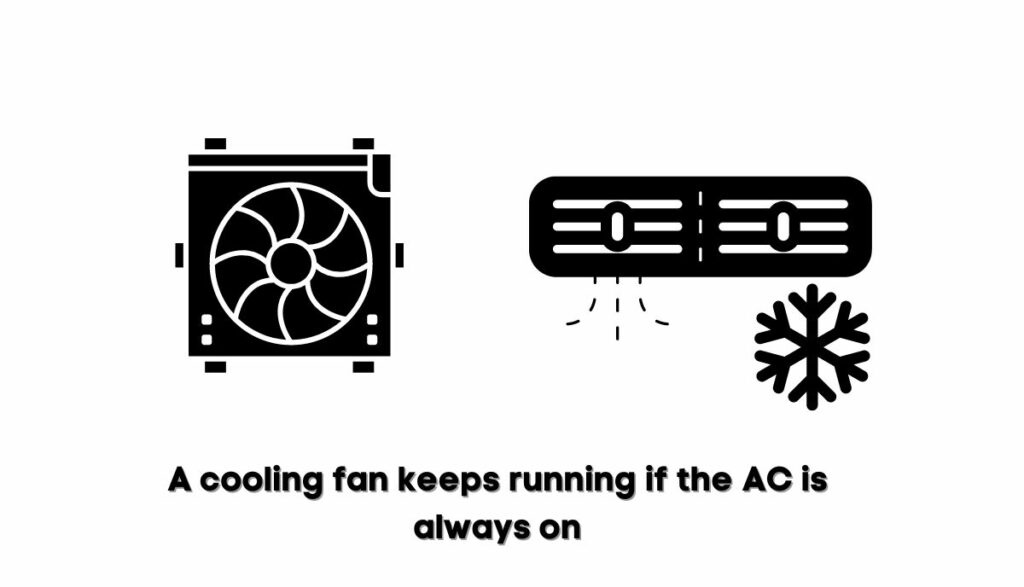
Many vehicles have two fans that run when you activate the air conditioner. In other words, don’t be surprised that a cooling fan keeps running if the AC is always on. Once you turn the AC off, the auxiliary fan will go off. The radiator fan will also deactivate, only reactivating once the coolant temperature spikes.
Don’t expect every vehicle’s fan to manifest the same response. After all, this paper from George Lomakin, Ilya Kochnev, and Sergey Kondakov (South Ural State University, Russian Federation) has highlighted the fact that radiator fans are wide-ranging. They can run on V-belt, hydro-mechanical, electromagnetic, and frictional configurations, to mention but a few.
Consult the manufacturer to determine whether your car’s fan should run continuously or intermittently.
How Long Does A Car Radiator Fan Run All The Time?
The AC taxes the engine and elevates the temperature. Therefore, using the air conditioner compels the fan to run constantly to lower the temperature. The fan may even continue to run when you initially park the car. This is only normal if the fan stops after a minute. The fan will continue to run as long as the air conditioner is on. Otherwise, it shouldn’t run continuously.
When you first start the engine in the morning, it may take the fan fifteen to twenty minutes before it turns on. After that, it will run intermittently depending on the engine temperature and the vehicle’s speed.
Won’t Running Radiator Fan All Time Cause A Problem?
This is your biggest challenge. Ultimately, a radiator fan that runs constantly won’t harm the engine. So long as the coolant continues to collect heat from the engine, your vehicle will work as expected.
However, the fan will wear out. You expect these components to last a decade. But you may lose the fan motor within a few years if it keeps running constantly.
When Should Radiator Fan Running All Time Become A Problem?
A radiator fan should only run continuously when you activate the air conditioner. Otherwise, it should stay off until the coolant temperature rises and the engine speed falls. A fan that runs all the time will wear out at a faster rate.
But how do you fix this problem? It depends on the factors that caused the problem. Consider the following:
1). Defective Coolant Temperature Sensor
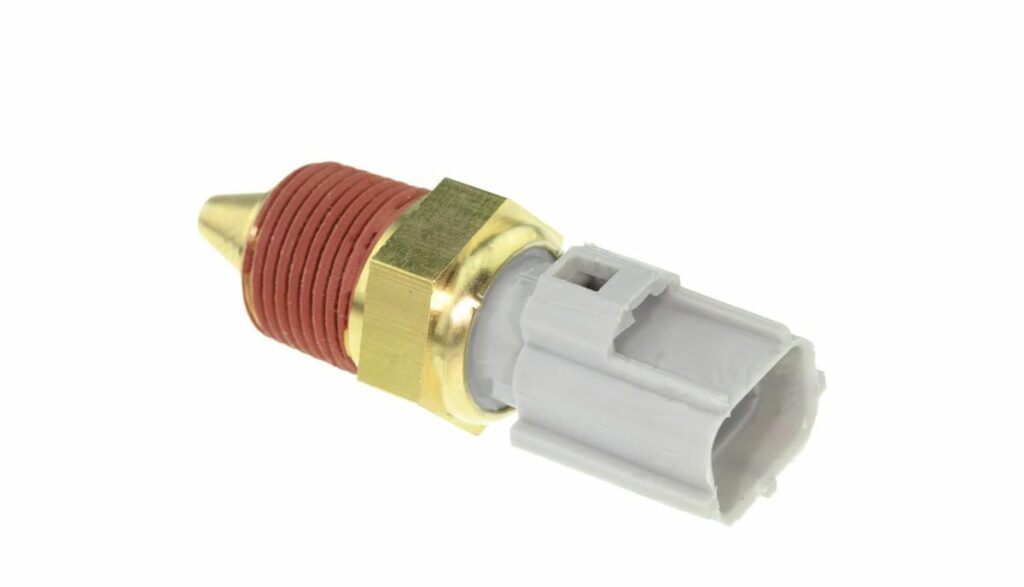
The coolant temperature sensor tracks the coolant’s temperature. The radiator fan uses the sensor’s information to turn on and off. If the sensor fails, the fan may run continuously because it erroneously thinks the coolant is too hot. Test the component’s resistance and replace the part if it fails the test.
2). Blocked Radiator
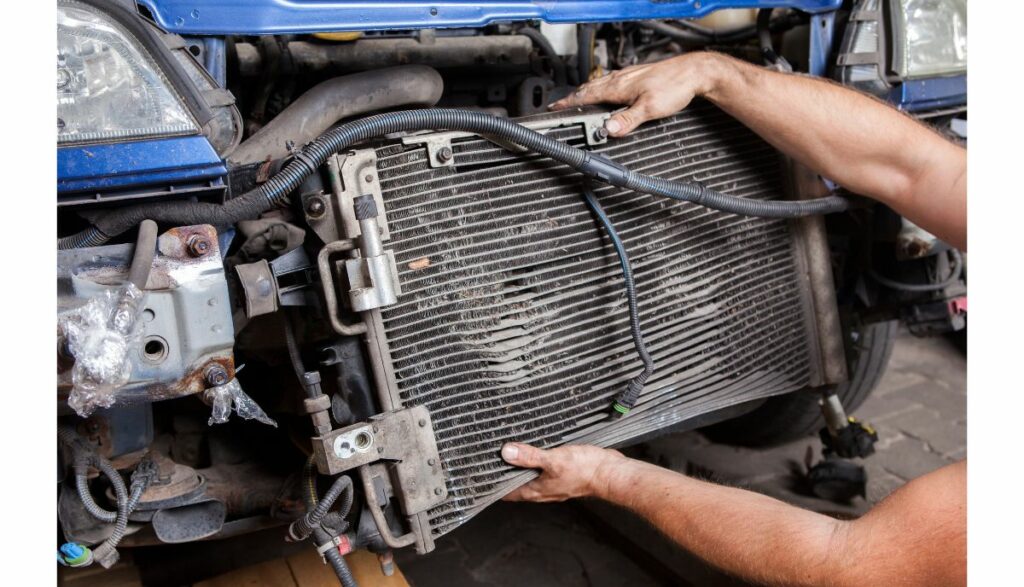
The fan keeps the engine from overheating by blowing or sucking air through the radiator. However, a dirty radiator can disrupt the fan’s work by restricting the airflow. Radiators are exposed to dirt, grime, stones, insects, and more.
If a radiator becomes sufficiently clogged, the engine may overheat even though you have a functional radiator fan. You can prevent this outcome by cleaning the area outside the radiator to prevent the debris from forming stubborn blockages.
You can also clean the radiator directly, although Simple Green wants you to avoid vinegar and bleach. The acetic acid and sodium hypochlorite in vinegar and bleach corrode metals. Find a heavy-duty commercial cleaner.
Flushing the radiator sounds like a lot of work. Fortunately, the practice is only necessary every two to five years.
3). Faulty Fan
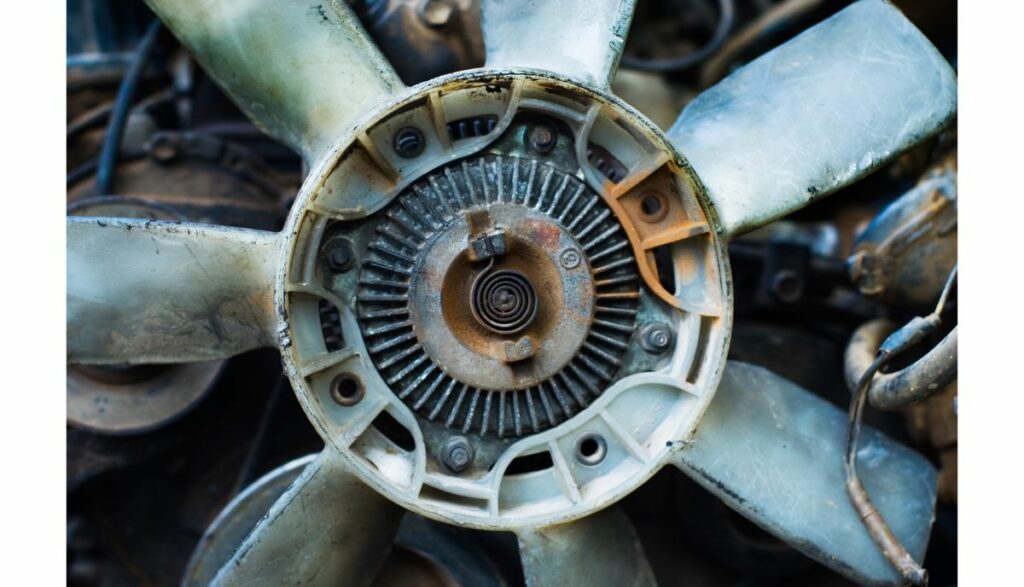
You don’t expect a bad radiator fan to spin continuously. However, you can’t rule it out until you perform a thorough analysis. That means checking the fuse box to determine whether the fan’s fuse has blown, searching for loose connections and frayed wiring, and inspecting the relay.
You can tighten loose connections and replace a dead fuse, broken wires, and damaged relays. These options are cheaper than replacing the radiator fan motor. This procedure costs you $625 or less.
You can lower replacement costs if you replace the fan yourself. This eliminates labor fees. And the radiator is easy to access. However, it is safer to hire a mechanic.
4). ECU Malfunction
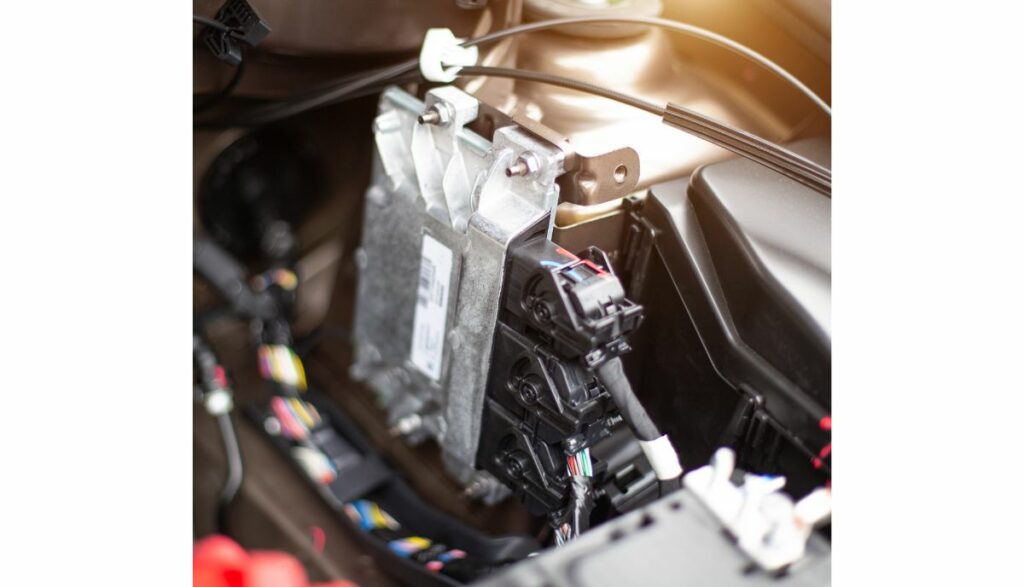
The ECU is a computing component that runs the vehicle’s electronics. A glitch in the ECU can disrupt the radiator fan. But don’t be so quick to perform a reset. The ECU relies on other parts to perform its functions, including the thermostat, airflow sensor, and fan start relay.
The coolant temperature sensor can send false data to the ECU, tricking the computer into thinking that the coolant is perpetually hot. The thermostat can stick in the closed position, preventing the coolant from flowing and causing the engine to overheat.
The water pump can produce similar results when it fails because the part circulates the coolant through the system. The coolant will stop flowing if the water pump malfunctions. As you can see, you have too many variables to consider.
Let a mechanic troubleshoot the ECU. They will check the engine control module for faults. A bad ECM can affect every aspect of your vehicle’s functions. Repairs may cost as much as $2,500, depending on the make, model, and severity of the malfunction. The labor fees will add several hundred dollars to your invoice.
A remanufactured ECM can lower your costs because you can get one for $200. But again, that doesn’t include labor.

